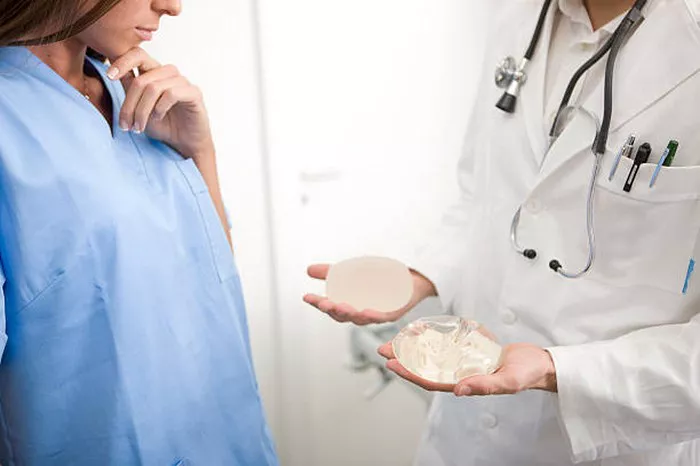Breast reconstruction is vital for many women post – mastectomy. Safety is a top concern. Let’s explore different methods.
Autologous Tissue Reconstruction
Latissimus Dorsi Flap
How It Works: This method uses the latissimus dorsi muscle on the back. The surgeon moves a part of this muscle, along with overlying skin and fat, to the chest to form a new breast mound. The muscle stays attached to its blood supply and nerves at the back.
Safety Aspects: It has low implant – related risks as no implant is used. The body’s own tissue is less likely to be rejected, and the well – vascularized tissue aids healing. The reconstructed breast can look and feel natural. However, a small implant might be needed sometimes, slightly increasing risk.
Transverse Rectus Abdominis Myocutaneous (TRAM) Flap
Procedure Details: The TRAM flap uses abdominal tissue, specifically the rectus abdominis muscle, along with skin and fat. There are pedicled and free TRAM flaps. The pedicled flap keeps the tissue attached to its original blood supply, while the free one detaches and reconnects it to chest blood vessels.
Safety Considerations: Blood supply is crucial. In the free TRAM flap, microsurgical skills are needed to connect blood vessels properly; otherwise, tissue death can occur. Using the rectus abdominis muscle risks abdominal wall weakness and hernias. But when successful, it creates a natural – looking breast.
Deep Inferior Epigastric Perforator (DIEP) Flap
Technique Explanation: The DIEP flap uses only the blood vessels that supply abdominal skin and fat, sparing the rectus abdominis muscle. The surgeon dissects these perforator blood vessels, transfers the skin and fat to the chest, and reconnects them to chest blood vessels.
Safety Advantages: By sparing the muscle, it reduces the risk of abdominal wall problems. It can provide great cosmetic results, and the body’s own tissue has a lower risk of rejection. Scarring in the abdominal area can also be less extensive.
Implant – Based Reconstruction
Saline Implants
Implant Characteristics: These are filled with sterile salt water, are relatively cheap, and come in various shapes and sizes.
Safety Concerns: The main risks are rupture, which causes the breast to deflate as the saline leaks out, and capsular contracture, where the scar tissue around the implant tightens, distorting the breast’s look and feel.
Silicone Implants
Properties of Silicone Implants: Filled with silicone gel that mimics natural breast tissue, they offer a more natural look and feel. Gummy bear implants are highly cohesive.
Safety Considerations: They can rupture or leak, though it may not be as obvious as with saline implants. There’s a rare link to anaplastic large cell lymphoma (ALCL).
Factors Affecting the Safety of Breast Reconstruction
Surgeon Experience
Importance of Skill: An experienced surgeon is more likely to perform the procedure accurately. In autologous tissue transfer, they can handle blood vessels and nerves better. In implant – based reconstruction, they can ensure proper implant placement.
Case Selection: They can decide which method suits a patient best, considering the patient’s health, available tissue, and past surgeries.
Patient’s Overall Health
Medical Conditions: Pre – existing conditions like diabetes or high blood pressure can impact the surgery and recovery. Patients must tell their surgeon about all conditions.
Smoking and Lifestyle Factors: Smoking increases the risk of tissue necrosis, especially in autologous tissue reconstruction. Diet and exercise also play a role in recovery.
Post – Operative Care and Monitoring
Wound Care
Preventing Infection: Keeping surgical incisions clean and dry is crucial. The surgeon will give instructions on wound cleaning. Proper care reduces the risk of infection.
Monitoring for Complications: Patients should watch for redness, swelling, pain, or discharge. In implant – based reconstructions, changes in breast shape or feel should be noted.
Follow – Up Appointments
Regular Check – Ups: Regular visits to the surgeon are essential. The surgeon can assess healing, check for complications, and recommend imaging tests for implant – based reconstructions. For autologous tissue reconstructions, they can evaluate the breast’s appearance and function over time.
Conclusion
The safest breast reconstruction method depends on multiple factors. Autologous tissue reconstructions reduce implant – related risks but have donor – site risks. Implant – based reconstructions have their own risks. The safest approach involves careful planning, an experienced surgeon, and proper post – operative care. Patients should work closely with their healthcare team to choose the right method.
Related topics:
You Guide To The Most Natural Breast Implants
Discover Asian Breast Implants: Unlocking The Secret To Beauty And Confidence


